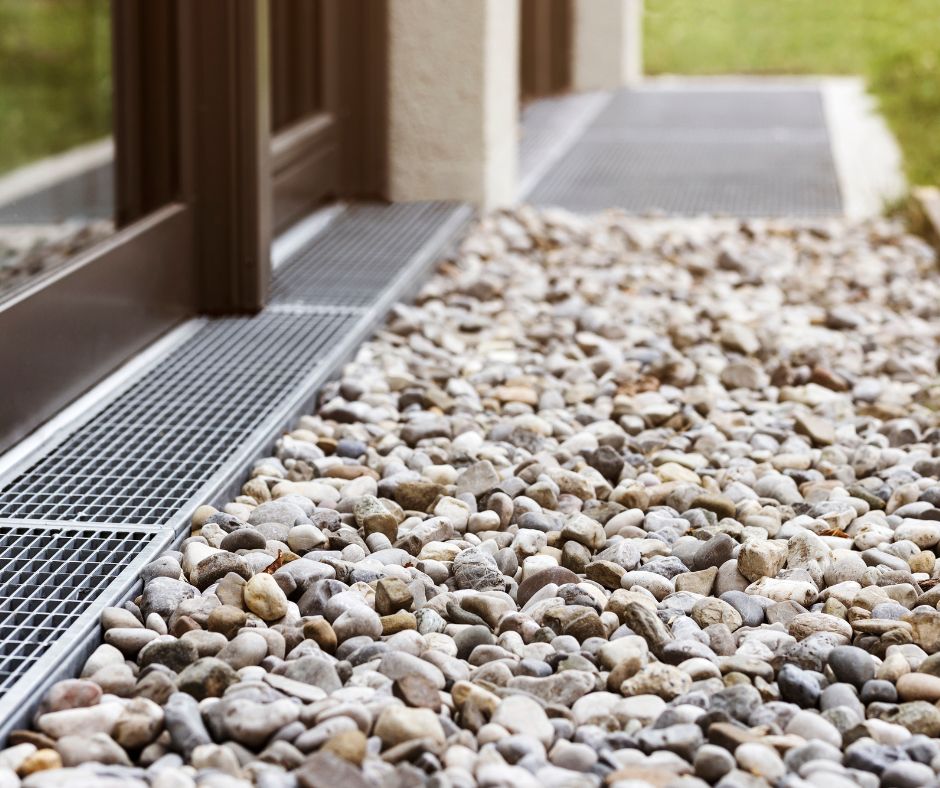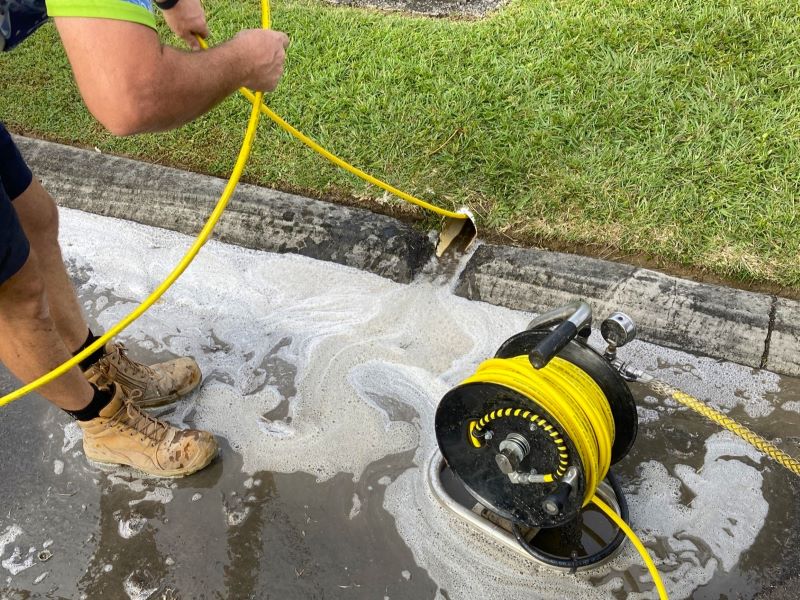Stormwater drainage systems play a vital role in protecting your property by managing stormwater runoff effectively. These systems consist of various components such as roof plumbing drainage, French drains, spoon drains, and strip drains, all designed to divert excess water away from your home. Regular maintenance is crucial, not merely as a precaution but as a necessity to avoid severe complications like drain blockages and flood risks. By addressing issues such as clogged grates, invasive roots that may penetrate your pipes, or aging plumbing infrastructure, a proactive maintenance strategy can significantly decrease the chances of future problems and costly repairs. Acquiring a deep understanding of the maintenance intricacies for these drainage systems is essential for preserving your home’s integrity and prolonging its lifespan.
This extensive guide delves into best practices for maintaining your drainage systems, offering actionable steps for addressing any blockages you may encounter along the way.

Proven Maintenance Techniques for Traditional Stormwater Drain Systems
Traditional stormwater drains are essential components of property infrastructure, meticulously designed to channel rainwater away from structures and minimize flood risks. Over time, these systems can become obstructed by an array of debris, including leaves, dirt, and branches, which can severely hinder their functionality. To prevent water accumulation near your home’s foundation—an issue that could lead to significant structural damage—it is crucial to engage in routine maintenance. Establishing a regular maintenance schedule not only optimizes the efficiency of your drainage systems but also extends their lifespan, particularly during heavy rainfall events when they are most needed.
Essential Tips for Caring for Traditional Drains:
- Regularly clear the grates and gutters: Make it a habit to routinely remove accumulated leaves and debris, especially after storms when the risk of blockage is at its peak.
- Monitor for pooling water: Stay vigilant for signs of water backing up or pooling near your drains, as these can indicate a blockage. Additionally, look for soggy patches in your garden, which may signal underlying drainage issues needing immediate attention.
- Engage professional services: Scheduling routine inspections and cleanings with a qualified plumber, such as Creek to Coast, ensures that your drains operate optimally and helps you sidestep future complications.
Optimal Maintenance Techniques for French Drain Systems
French drains are strategically engineered to redirect groundwater away from your home and retaining walls, making them indispensable for effective moisture management. However, these underground systems necessitate consistent care and attention to prevent potential blockages. Comprised of gravel and a perforated pipe, French drains are designed to facilitate efficient water diversion, but they are susceptible to clogging from dirt, sediment, and invasive roots over time. Regular maintenance is essential to ensure their longevity and operational efficiency, ultimately preventing issues that could lead to expensive repairs in the future.
Key Maintenance Tips for French Drains:
- Watch for slow drainage: If you observe that water is not draining as it should, this may indicate a clog requiring immediate attention to avoid further complications.
- Regularly flush the system: Periodically flushing the drain with water can assist in eliminating potential blockages before they escalate into significant problems disrupting drainage.
- Seek professional cleaning services: Should you notice sediment buildup or root intrusion, contacting Creek to Coast for thorough cleaning, potentially using hydro-jetting tools, can effectively clear your pipes.
Comprehensive Maintenance Practices for Spoon Drain Systems
Spoon drains feature shallow, curved channels specifically designed to efficiently guide surface water away from driveways, patios, and other paved areas. While they generally require minimal upkeep, consistent attention is still necessary to prevent clogging. Failure to clear these channels can result in water pooling on your property, leading to significant damage over time. By adopting simple yet effective maintenance habits, you can ensure that your spoon drains remain functional and efficient, safeguarding your property from potential water-related issues.
Maintenance Guidelines for Spoon Drains:
- Keep the channel debris-free: Regularly sweeping out leaves, dirt, and other materials will maintain unobstructed water flow. Utilizing a high-pressure washer can be particularly effective for thorough cleaning.
- Check the slope: Ensure the slope of the spoon drain is intact and functioning correctly, as gravity plays a crucial role in directing water away.
- Inspect for damage: Regularly examine the drain for cracks or breaks, as they can be compromised by vehicle traffic and may require repair to sustain proper function.
- Seek professional evaluation: Should you notice poor drainage, it may be wise to contact Creek to Coast for a professional assessment to make necessary adjustments or repairs for optimal performance.
Critical Maintenance Steps for Linear Drain Systems
Linear drains, commonly known as trench drains, are strategically installed in various locations such as driveways and pool decks to effectively capture surface runoff. While they excel at preventing water accumulation, they can gather debris over time, making regular cleaning fundamental to maintaining their effectiveness. Establishing a consistent cleaning routine is vital to prevent blockages that could lead to water pooling and damage in adjacent areas, thereby ensuring the long-term performance and durability of these systems.
Maintenance Tips for Linear Drains:
- Frequently clean the grates: Regularly inspect the grates for any buildup of dirt, leaves, or debris that could obstruct water flow, and remove these blockages as necessary.
- Regularly flush the system: Routinely running water through the drain ensures proper flow and helps identify any potential blockages before they become serious.
- Consider professional maintenance: If you experience backups or slow drainage, do not hesitate to contact Creek to Coast for expert cleaning services to effectively eliminate deep clogs and debris.
Immediate Actions to Take When Facing Blocked Drains
Despite your best efforts at maintenance, blockages can still occur in any drainage system. Symptoms such as water pooling, slow drainage, or overflowing grates indicate that immediate action is crucial to prevent more severe complications. By understanding the common causes of blockages, you can quickly identify the issue and take the appropriate steps to resolve it efficiently.
Common Causes of Blockages Include:
- Tree roots: Roots can infiltrate underground pipes, creating significant blockages that disrupt water flow and drainage.
- Accumulated debris: Leaves, dirt, and other environmental materials can build up over time, obstructing water passage through your drainage system.
- Pipe damage: Broken or crushed pipes can severely restrict water flow, necessitating immediate professional intervention to restore functionality.
When confronted with a blockage, consulting a professional plumber like Creek to Coast is highly advisable. They utilize advanced tools, such as high-pressure water jetters and CCTV cameras, to accurately diagnose and resolve the issue. Attempting to clear a blockage independently can exacerbate the problem, especially if the pipes are damaged or roots have infiltrated the system.

Holistic Strategies for Comprehensive Stormwater Drain Maintenance
To ensure that your stormwater management systems—whether they encompass traditional, French, spoon, or linear drains—continue to function effectively, consider implementing the following comprehensive strategies:
- Schedule annual inspections and cleanings with a licensed plumber like Creek to Coast. This proactive approach not only aids in debris removal but also identifies potential problems before they escalate into significant issues.
- Monitor water flow: After heavy rainfall, inspect your drains for any pooling or slow drainage, which could indicate underlying issues requiring prompt attention.
- Install gutter guards and grates to prevent larger debris from entering your drains, thereby minimizing the frequency of blockages and the need for maintenance.
- Maintain distance from plants and trees: Roots from nearby trees can invade and obstruct pipes, making it essential to keep vegetation at a safe distance from your stormwater systems to avoid future complications.
Consistent plumbing maintenance and timely responses to drainage issues are vital for protecting your property from water damage and ensuring that your drainage systems operate smoothly and efficiently. If you notice any signs of blockage, don’t hesitate to reach out to Creek to Coast for expert assistance in keeping your stormwater drains flowing seamlessly!
The Article: Stormwater Clarity: Essential Drain Maintenance Tips first appeared on https://writebuff.com.
The Article Drain Maintenance Tips for Stormwater Clarity Was Found On https://limitsofstrategy.com
The Article Stormwater Clarity: Essential Drain Maintenance Tips First Appeared ON
: https://ad4sc.com



This is such an important topic! I remember when I ignored my drainage system for too long and ended up with a flooded yard after a heavy rain. It’s crazy how a bit of maintenance can save you from a major headache. I’ve recently started using compost in my garden, and I’ve noticed that my drainage system has been affected by roots more than I anticipated. It’s a balancing act, right? Nature is beautiful, but it can also be relentless. I’m curious if anyone has tried preventative solutions like root barriers, or if there are any tech solutions out there that help with monitoring drainage systems? Would love to hear experiences!
What a timely and insightful exploration of stormwater drainage systems! As a homeowner who has struggled with the consequences of neglecting these systems, I can wholeheartedly relate to the importance of regular maintenance. In my experience, it’s often the little things that lead to the most significant issues. For instance, a seemingly minor blockage can quickly escalate into a flooded basement, leading not only to costly repairs but also potential health risks from mold and mildew.